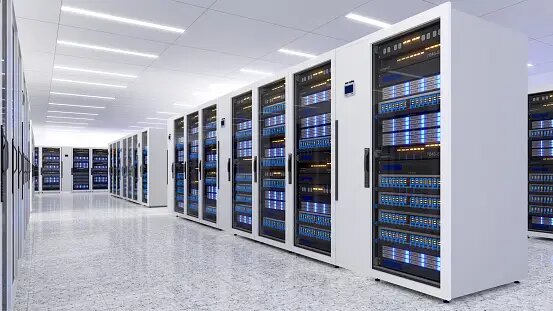A robust IT infrastructure monitoring system is no longer a luxury but a necessity for clients. As businesses rely heavily on technology to drive their operations, the smooth functioning of their IT infrastructure becomes paramount. This article explores the concept of IT infrastructure monitoring, its key components, the role it plays in business continuity, security, and optimization, how to select the right monitoring tools, and the challenges involved in its implementation.
Understanding IT infrastructure monitoring

IT infrastructure monitoring refers to the practice of systematically overseeing and managing an organization’s entire IT infrastructure. It involves tracking and analyzing various elements, such as servers, networks, databases, and applications, to ensure their optimal performance and availability. This process provides valuable insights into the health and performance of the IT ecosystem, enabling proactive identification and resolution of potential issues before they escalate into major problems.
Definition and importance of IT infrastructure monitoring
IT infrastructure monitoring is the continuous monitoring of the components that make up an organization’s IT infrastructure. These components include servers, networks, storage, virtualization, and applications. By monitoring these elements, businesses can gain valuable insights into their performance, identify potential bottlenecks or vulnerabilities, and proactively address any issues that may arise.
Imagine a bustling city with a complex transportation system. Just like traffic lights, road conditions, and public transportation schedules need to be constantly monitored to ensure smooth operation, IT infrastructure monitoring serves as the traffic controller for an organization’s technology ecosystem. It keeps a watchful eye on the servers, networks, databases, and applications, keeping them running efficiently and harmoniously.
The importance of IT infrastructure monitoring cannot be overstated. It allows organizations to detect and resolve issues before they impact end-users, minimize downtime and disruptions, and deliver a seamless user experience. By providing real-time visibility into the health of the IT infrastructure, monitoring tools empower businesses to optimize resource allocation, make informed decisions, and adapt to the evolving needs of their clients.
Key components of IT infrastructure monitoring
A comprehensive IT infrastructure monitoring framework comprises various components that work together to provide a holistic view of the IT ecosystem. These components include:
- Network monitoring: Tracking network performance, bandwidth utilization, and identifying potential bottlenecks or security threats.
- Server monitoring: Monitoring server performance metrics, such as CPU usage, memory utilization, and disk space, to ensure optimal operation.
- Application monitoring: Monitoring application performance, user interactions, and response times to identify bottlenecks and optimize performance.
- Database monitoring: Monitoring the health and performance of databases, such as query response times, latency, and database availability.
- Log monitoring: Analyzing log files to detect anomalies, security breaches, or critical events that may impact the IT infrastructure.
Let’s dive deeper into each of these components to understand their significance in the IT infrastructure monitoring landscape.
Network monitoring plays a crucial role in the smooth flow of data within an organization. By tracking network performance and bandwidth utilization, IT teams can identify potential bottlenecks that may hinder the efficient transfer of information. Additionally, network monitoring helps in detecting security threats, such as unauthorized access attempts or suspicious network activity, allowing organizations to take immediate action and safeguard their data.
Server monitoring focuses on the performance of individual servers within the IT infrastructure. By monitoring metrics such as CPU usage, memory utilization, and disk space, IT teams can identify any abnormalities that may indicate a server’s potential failure or overload. This proactive approach enables organizations to address server-related issues before they impact critical business operations, ensuring uninterrupted service delivery.
Application monitoring is essential for organizations that rely heavily on software applications to deliver their services. By monitoring application performance, user interactions, and response times, businesses can identify bottlenecks that may hinder the smooth functioning of their applications. This enables them to optimize performance, enhance user experience, and maintain customer satisfaction.
Database monitoring focuses on the health and performance of databases within an organization. By monitoring metrics such as query response times, latency, and database availability, IT teams can keep databasesoperating optimally. This helps in identifying and resolving any issues that may impact data integrity, system performance, or user experience.
Log monitoring involves analyzing log files generated by various components of the IT infrastructure. By monitoring logs, IT teams can detect anomalies, security breaches, or critical events that may impact the overall health of the IT ecosystem. This enables organizations to take immediate action, investigate the root cause of the issue, and implement necessary measures to prevent similar incidents in the future.
The role of robust IT infrastructure monitoring

A robust IT infrastructure monitoring system plays a pivotal role in supporting business continuity, enhancing security and compliance, and optimizing IT operations.
Ensuring business continuity
Business continuity is crucial for organizations of all sizes and industries. Downtime or disruptions in IT services can result in financial losses, repuatational damage, and loss of customer trust. With a robust monitoring system, organizations can proactively identify and address potential issues, minimizing the risk of service interruptions. By continuously monitoring critical components of the IT infrastructure, such as servers, networks, and applications, businesses can support high availability and quickly respond to any incidents that may arise.
For example, imagine a large e-commerce company that heavily relies on its website to generate revenue. Without a robust IT infrastructure monitoring system, the company would be vulnerable to unexpected downtime, which could lead to lost sales and dissatisfied customers. However, by implementing a comprehensive monitoring solution, the company can detect and resolve issues before they escalate, providing uninterrupted service and maintaining customer satisfaction.
Enhancing security and compliance
Cybersecurity is a top concern for many organizations. Robust IT infrastructure monitoring helps detect and mitigate security threats, protecting critical business data and customer information. By continuously monitoring network traffic, server logs, and application performance, businesses can identify and respond to potential security breaches in real-time.
Take, for instance, a financial institution that handles sensitive customer information. Without a robust monitoring system, the institution would be at a higher risk of cyberattacks, which could result in significant financial and reputational damage. However, by implementing a comprehensive monitoring solution, the institution can detect any suspicious activities, such as unauthorized access attempts or unusual network traffic patterns, and take immediate action to prevent any potential breaches.
Furthermore, monitoring tools play a crucial role in meeting compliance requirements by providing detailed logs and reports, ensuring organizations adhere to industry regulations and standards. This helps organizations avoid hefty fines and demonstrates their commitment to data privacy and security.
Optimizing IT operations
A well-implemented IT infrastructure monitoring system enables businesses to optimize their IT operations and resource allocation. By gaining granular insights into the performance and utilization of various IT components, organizations can identify inefficiencies, optimize resource allocation, and predict future capacity requirements.
For example, consider a software development company that experiences frequent delays in project delivery. By implementing a comprehensive monitoring solution, the company can identify bottlenecks in the development process, such as slow server response times or network congestion, and take appropriate measures to address these issues. This not only improves the efficiency of the development team but also enhances overall productivity and customer satisfaction.
Furthermore, with the ability to predict future capacity requirements, organizations can proactively plan for growth and scale their IT infrastructure accordingly. This eliminates the need for reactive measures, such as emergency hardware purchases or rushed software deployments, saving both time and money in the long run.
Choosing the right IT infrastructure monitoring tools is crucial for effective monitoring and management of the IT ecosystem. Consider the following factors when selecting monitoring tools:
Evaluating your business needs
Start by assessing your organization’s specific monitoring requirements. Consider factors such as the size of your infrastructure, the types of technologies you use, and the level of monitoring granularity you need. This evaluation will help you identify the features and capabilities that best align with your business needs.
Furthermore, it’s essential to consider future growth and expansion plans when evaluating your business needs. Anticipating how your infrastructure may evolve can help you choose monitoring tools that can scale with your organization seamlessly. Look for tools that offer flexibility and adaptability to accommodate potential changes in your IT environment.
Comparing different monitoring tools
Once you have identified your requirements, evaluate multiple monitoring tools to find the right fit. Compare factors such as ease of implementation, scalability, customization options, and support resources. Consider the tool’s ability to integrate with existing infrastructure and evaluate its user-friendly interface and reporting capabilities.
In addition to the technical aspects, consider the vendor’s reputation and track record in the industry. Look for reviews and testimonials from other organizations using the monitoring tools to gauge user satisfaction and the vendor’s commitment to customer support and product development.
Understanding the integration process
Before committing to a specific monitoring tool, ensure it can seamlessly integrate with your existing IT environment. Consider factors such as compatibility with your operating systems, databases, and applications. Additionally, evaluate the tool’s integration capabilities with other IT management systems, such as Service Desk or Incident Management platforms.
Furthermore, assess the training and support provided by the vendor for the integration process. A smooth integration is crucial for maximizing the benefits of the monitoring tool and minimizing disruptions to your IT operations. Look for vendors that offer comprehensive documentation, training programs, and responsive support services to assist you during the integration phase.
Challenges in implementing IT infrastructure monitoring
Implementing IT infrastructure monitoring can pose several challenges for organizations. Being aware of these challenges can help businesses proactively address them:
Dealing with complex IT environments
Organizations with complex IT environments face the challenge of monitoring a vast array of interconnected systems and technologies. Ensuring comprehensive coverage and accurate monitoring in such environments requires careful planning, proper tool selection, and expertise in managing complex IT ecosystems.
Overcoming resource constraints
Implementing an effective monitoring system requires allocating sufficient resources, including skilled personnel, hardware, and software. However, resource constraints, such as a limited budget or lack of skilled personnel, can impede the successful implementation and maintenance of an IT infrastructure monitoring system. Organizations must address these constraints by prioritizing investment in monitoring tools, providing adequate training for personnel, and exploring outsourcing options if necessary.
Addressing skill gaps
Skills and expertise in IT infrastructure monitoring are essential for the successful implementation and operation of a monitoring system. Finding skilled personnel or providing adequate training to existing IT staff can be a challenge for organizations. To address this, businesses should invest in training programs and certifications or consider partnering with managed service providers who specialize in monitoring and managing IT infrastructure.
Conclusion
A robust IT infrastructure monitoring system is no longer optional—it is a necessity. With the ability to identify and resolve potential issues before they impact end-users, support business continuity, enhance security and compliance, and optimize IT operations, IT infrastructure monitoring empowers organizations to deliver unparalleled service quality, maintain a competitive edge, and foster customer satisfaction. By strategically selecting the right monitoring tools, overcoming implementation challenges, and addressing skill gaps, businesses can unlock the full potential of IT infrastructure monitoring and embrace the benefits it brings to their clients and their overall success.







